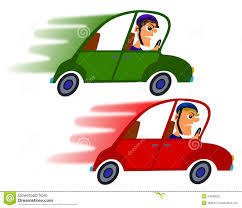Return of the Particle Race

The old rivals, particles and are back, yet again for another thrilling race. This time the arena is a friction-less circular track with radius and diameter .The race begins from and ends at .
: It is released from point at an angle with the horizontal , with a velocity of , such that it lands exactly at point .
: It starts from and moves around the circumference, such that at every instant the and accelerations are equal in magnitude. The velocity of at is also .
Find the difference in time taken for particles and (consider equal mass and dimensions), to reach point
Details and Assumptions :
, ,
Neglect air-resistance
If you think wins , add to your difference, otherwise add .
Definitely try the first part
This question is part of the set Best of Me
The answer is 6.329.
This section requires Javascript.
You are seeing this because something didn't load right. We suggest you, (a) try
refreshing the page, (b) enabling javascript if it is disabled on your browser and,
finally, (c)
loading the
non-javascript version of this page
. We're sorry about the hassle.
First I started with Q, according to given condition
R d t d ω = R v 2 (Let the velocity of particle at any arbitrary point be v )
So
d t d ω = ω 2
On integrating we get
− ω 1 = t + C
At t = 0 ω = R v 0
So C = − v 0 R
So the equation becomes
− ω 1 = t − v 0 R
So on substituting ω = d t d θ we get
∫ 0 T v 0 R − t d t = ∫ 0 π d θ
So, ln ( v R − t ) = − π
or ( v R − t ) = e − π
On putting values I got t = 0 . 7 5 6
Now for Particle P
It follows a projectile motion with range = 2 R
g v 2 s i n ( 2 θ ) = 2 R .........(1)
And Time of flight of projectile
T 0 = g 2 v s i n ( θ )
On putting value and using eq(1)
I got T 0 = 1 . 7 6
So it is clear that particle Q won the race so the answer is 1 . 7 6 − 0 . 7 5 + 5 . 3 1 = 6 . 3 2 .